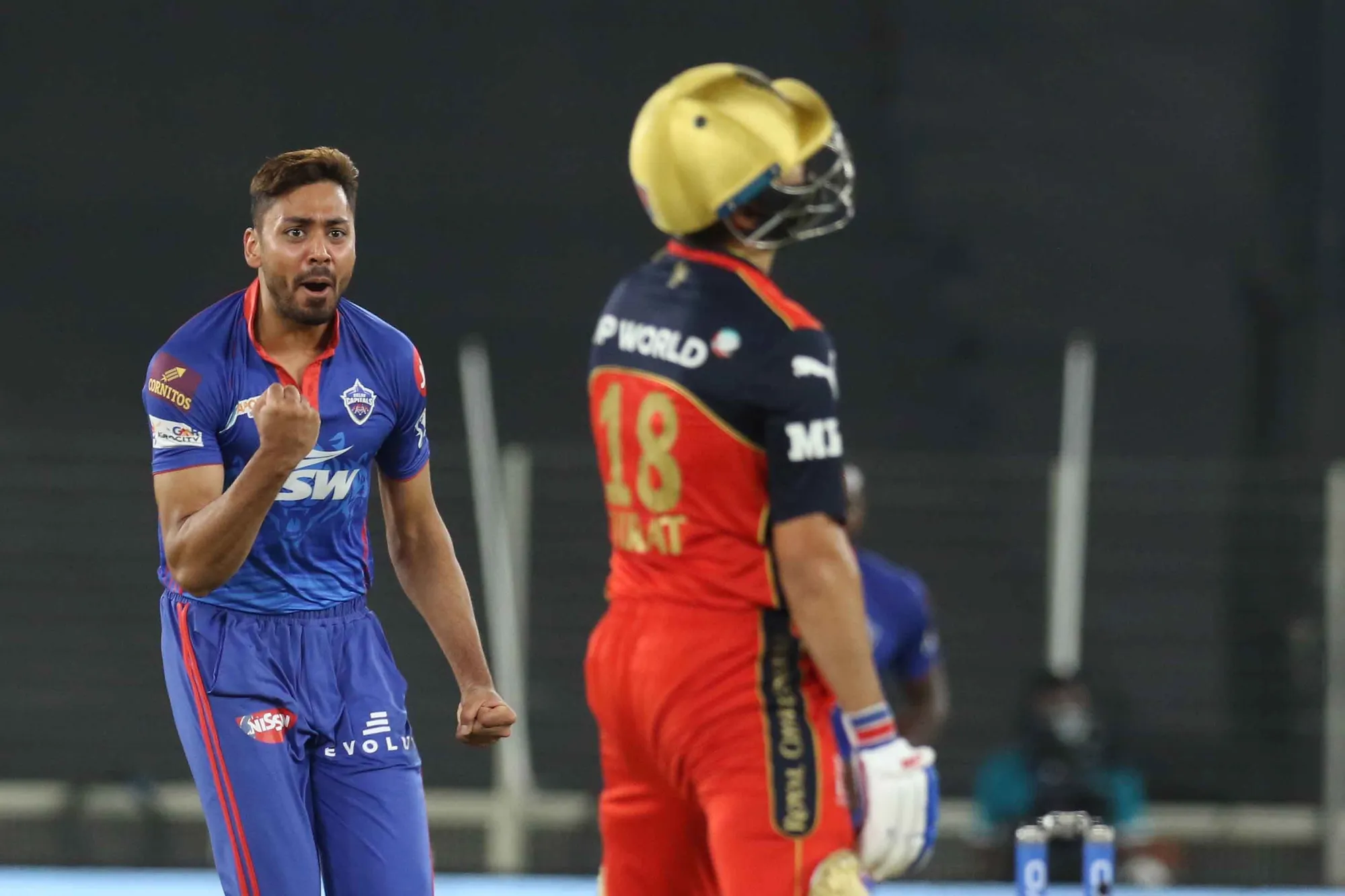How uncapped bowlers led from the front to change teams' dynamics in IPL 2021
Uncapped Indian bowlers are the real deal - they have the ability to change the fortune of a side and also help the franchises strike the right balance. This season, four uncapped bowlers - Chetan Sakariya, Avesh Khan, Arshdeep Singh and Harshal Patel - changed their respective team's dynamics.

Rajasthan Royals - Chetan Sakariya
Early into the season, Rajasthan Royals were forced into playing the Bangladesh left-arm pacer Mustafizur Rahman as their first-choice bowler, given that Jofra Archer was out of the initial stage of the tournament, while the two all-rounders - Chris Morris and Ben Stokes - provided a nice bit of control for the franchise, with the bat and the ball. However, they lacked an Indian strike-bowler, given that Kartik Tyagi was injured. So where did they go?
Enter Chetan Sakariya, a 23-year-old pacer, who walked into the Rajasthan set up, ahead of the experienced pacer in Jaydev Unadkat. In his first game, he picked up a three-fer, conceding just 31 runs, in the narrow loss over Punjab Kings. But what he did, more importantly, allowed the franchise to concentrate on the other factors - which was their batting.
How did the dynamics change?
Last season, Rajasthan were sixth on the bowling charts in the powerplay, conceding nearly 8.33 RPO, with just 17 powerplay wickets in the entire season. Out of the 17 wickets, ten were taken by Jofra Archer, who wasn’t available for the first half of the season (later confirmed out of the season), and he conceded at just 4.35 RPO. So they needed not one but two players to fill that void in the powerplay.
So in 2021, they picked Chetan Sakariya and put him to task in Mumbai, one of the toughest places for pace bowlers, especially considering the dew. While he wasn’t a prolific wicket-taker in the powerplay, he only conceded 7.27 RPO, which allowed the team to build the pressure. In the middle-overs, he picked up six wickets, allowing Rajasthan to crawl their way back into encounters.
Okay, the dynamics part. Sakariya did not quite alter how RR utilized their personnel, but with his impeccable skills, he quite literally transformed the dyamic of the RR bowling unit. For the first time in two seasons, the Royals boasted of an Indian pacer who they could rely on.
Delhi Capitals - Avesh Khan
Possibly the biggest game-changer for Delhi Capitals this season, Avesh Khan took the side's level up a notch, helping them to the top of the table. In a chat earlier this year, DC’s analyst Sriram Somyajula told SportsCafe that Avesh was unlucky to not have played for Delhi. But given the circumstances this season - with the South African players arriving late - the franchise had no choice but to field the fiery pacer, a move that would go on to define their season. 14 wickets @16.50 and an ER of 7.70, he really took the tournament by storm
How did the dynamics change?
Delhi had the third-best bowling statistics in the powerplay phase from last season, with 25 wickets, conceding 7.88 RPO, with 269 dot deliveries. But that was in the presence of two South African bowlers - Nortje and Rabada. But now that they were not available, Delhi put their trust in Avesh Khan, and he did not disappoint. This season, DC were the second-best team in the first six overs, with 13 wickets in the period, conceding just 7.27, less than last season.
The Indore pacer also consistently picked wickets for the franchise, with three in the first six, three in the overs from 7-11, four in 12-16 and four in the last four overs. That was not the impact alone, with Shreyas Iyer ruled out with an injury, Delhi had no choice but to field an overseas player in at No.3. Avesh allowed just that, his performance helped the franchise to field Steve Smith, in that very own position.
Punjab Kings - Arshdeep Singh
Last season, Punjab lost a lot - their pride, their name and everything that was associated with the franchise. But it wasn’t all bad, they unearthed Ravi Bishnoi, Arshdeep Singh and also had let go of all their under-performing stars. They also got in the Australian pace duo of Jhye Richardson and Riley Meredith. Ultimately, however, it boiled down to Arshdeep Singh’s place in the setup, which allowed Punjab to field the extra power-hitter in the middle-order.
How did the dynamics change?
Before mysteriously going away from the setup, Arshdeep Singh formed an integral part of the setup, allowing Punjab to go all-out attack. Not only did he bowl with the new ball, he was a proven wicket-taker, which also allowed KL Rahul to trust him with the goods in the death overs. In the Chennai leg, where Punjab knew that their middle-order would have to be much better, they had no choice but to play foreign stars.
That’s where Arshdeep’s inclusion allowed for flexibility, with him playing as the second-choice bowler over both Jhye Richardson and Riley Meredith, especially considering that he bowled with the new ball and also took on the responsibility of delivering in the death overs. In three of their encounters, Punjab played two of Moises Henriques, Fabian Allen and Chris Jordan. But whichever way they went, Arshdeep’s inclusion gave the bowling unit the flexibility that was required.
Royal Challengers Bangalore - Harshal Patel
Royal Challengers Bangalore’s bowling in the death overs has historically been a train wreck - it is not anymore a secret, it is a well-known fact, considering how they have suffered. But this season, everything changed - when they decided to trade in Harshal Patel from Delhi Capitals. That changed it all, RCB finally got their Indian death-over specialist, which also changed their fortune.
How did the dynamics change?
Easy, last year RCB had no choice but to field Chris Morris - who was their proven wicket-taker - in the death overs. Once they put him back on the market, they had to scurry to secure the services of another all-rounder who could fill in that void. And Harshal stepped in, allowing the likes of Glenn Maxwell and Daniel Christian, for large parts of the tournament, to be fielded as specialist batsmen.
And, more importantly, Bangalore could field Kyle Jamieson as the fourth-foreign pick, which also seemingly tackled their issues in the powerplay, combining to forge a partnership in steel with Mohammed Siraj. Now how exactly did Harshal help? Harshal’s primary role in the Red and Gold was to bowl after the restrictions were over and whenever he stepped up with the ball, the wickets came tumbling down.
It was at the death where he picked up his speciality, with ten wickets in the tournament during the last five overs, averaging 14.3. Not that alone, in the overs leading to the death, the Haryana all-rounder picked up six crucial wickets, conceding just 7.33 RPO, averaging 11, with 48.1% dot-balls. His presence allowed Bangalore to field Kyle Jamieson and Dan Christian in the same team when many wondered prior to the season that there was potentially only one available place.

Comments
Sign up or log in to your account to leave comments and reactions
0 Comments